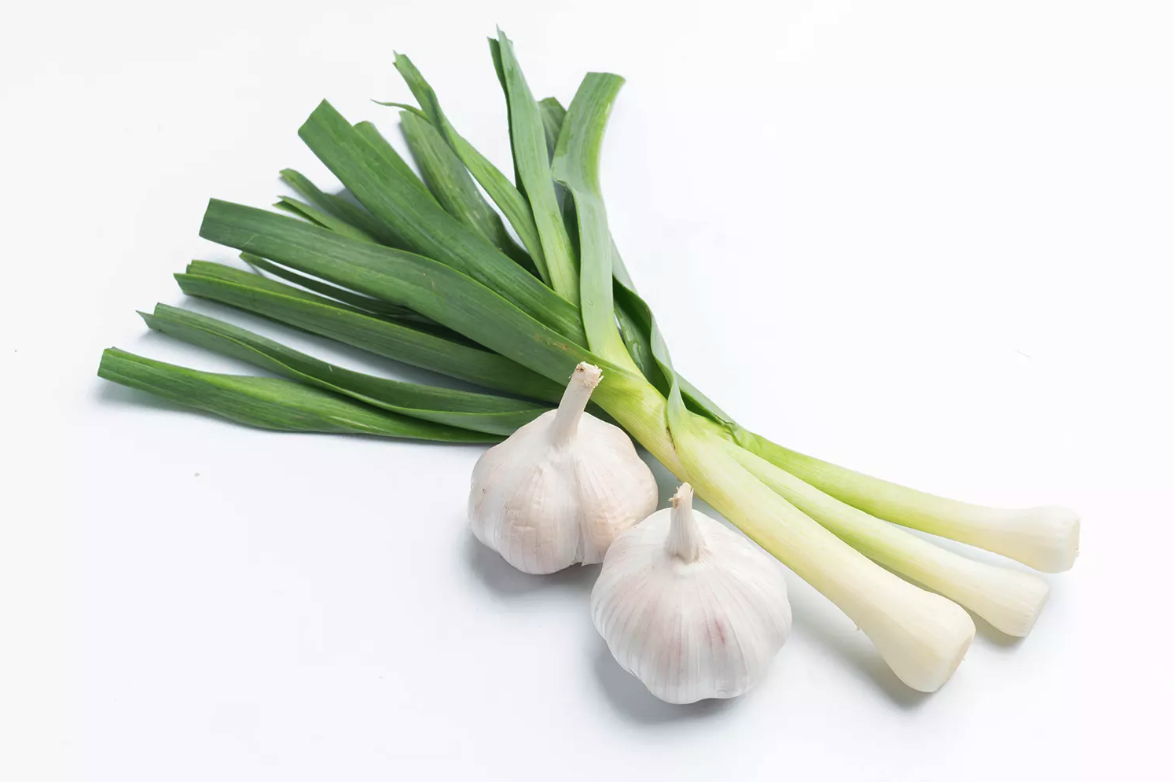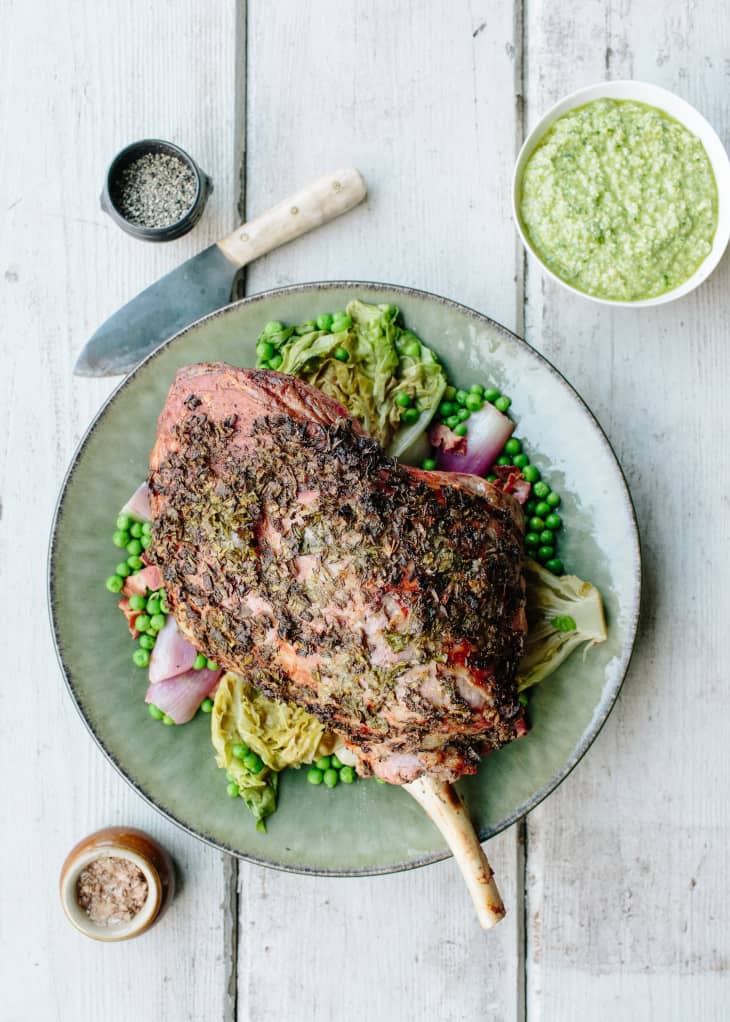
What is green garlic?
Botanically classified as Allium sativum, green garlic is a young garlic plant that’s harvested before maturity. Also known as spring garlic or baby garlic, green garlic can be identified by its long, slender green leaves—similar to green onions and spring onions—and, depending on the stage of growth when it was pulled, a tiny undivided bulb near its roots. The latter sometimes has a pink or purple tinge.
Early-harvested garlic plants have been used for centuries in Europe and Asia, especially in India, but have recently become a popular ingredient in North America. While it was traditionally culled when farmers were thinning their garlic field, it’s now grown specifically for harvest as a crop of its own.
Green garlic is really just a young garlic plant. Garlic is planted in the fall before the first frost, then starts to grow vigorously early in the spring when the green tops start poking through the soil. At this point, the garlic usually has not formed bulbs yet, although some green garlic will be sold with bulbs attached (but the bulbs will not be dried).
Farmers then go through the fields and cull some of this green garlic to promote bulb growth from the remaining garlic plants. This culled green garlic is what is shipped out and sold at farmers markets and stores.
Green garlic looks very much like thicker scallions or spring onions — they are long and slender with tender green tops, and the white parts can be tinged with pink or purple. If you’re not sure if you’re looking at green garlic or spring onions, just give it a sniff. The plant should smell like garlic, not onions. Green garlic will last a few days in the refrigerator, much in the same way as spring onions or scallions.
What does it taste like?
Brighter and milder than regular garlic, green garlic has garlic’s heady, savoury aroma, but with less heat than mature garlic. When eaten raw, it tastes sharp, with subtle fresh, vegetal undertones—similar to a hybrid between scallion and leek. Like all garlic, green garlic’s taste mellows out when cooked.
How is green garlic different from scallions or green onions?
Green garlic has a similar appearance to many members of the allium family that have long stalks and tender green leaves, but there are differences between each species. While green garlic has a similar appearance to scallions (a.k.a. green onions) or spring onions (Allium cepa)—which are both young onions at various stages of growth, harvested before the bulb has had a chance to swell—it is immature garlic.
Are Garlic Scapes and Green Garlic the Same Thing?
And, for those of you who are wondering, green garlic and garlic scapes are not the same thing – No. In contrast to garlic scapes (the flowering stalks of the mature hard-necked garlic), green garlic has tender leaves and is harvested before the garlic bulbs develop. Garlic scapes also look like thin, green, curly, straw-shaped vegetables that start tender, but get tougher as they mature. Besides having a more tender-crisp texture than soft green garlic, the flavor of scapes is stronger. However, scapes can be substituted for green garlic and vice versa.
Cooking with Green Garlic
Green garlic has a milder, fresher, and sweeter taste than regular hardnecked garlic. The whole plant can be eaten, and it has a spicier, more intense bite than scallions, but can be used in much the same way. I used it as both a rub for roasting lamb as well as a pesto, and it was delicious and had such a vivid color that reminded me of spring!
Green garlic is also great in stir-fries or salads, and since it’s here for such a short season, it’s worth seeking out. Don’t wait as long as I did to discover this tasty sign of spring that’s easy to incorporate into everyday cooking!


